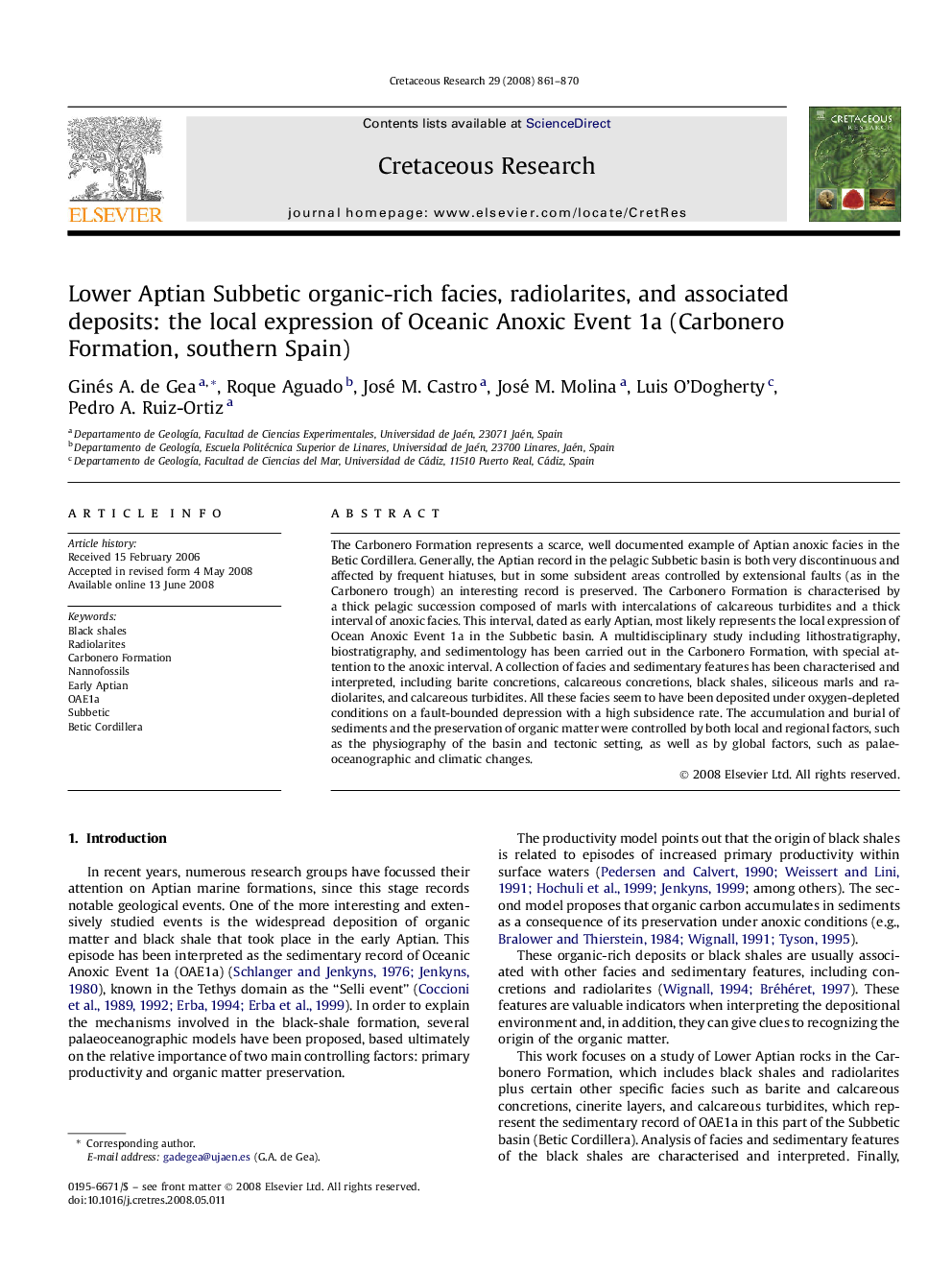| Article ID | Journal | Published Year | Pages | File Type |
|---|---|---|---|---|
| 4747700 | Cretaceous Research | 2008 | 10 Pages |
Abstract
The Carbonero Formation represents a scarce, well documented example of Aptian anoxic facies in the Betic Cordillera. Generally, the Aptian record in the pelagic Subbetic basin is both very discontinuous and affected by frequent hiatuses, but in some subsident areas controlled by extensional faults (as in the Carbonero trough) an interesting record is preserved. The Carbonero Formation is characterised by a thick pelagic succession composed of marls with intercalations of calcareous turbidites and a thick interval of anoxic facies. This interval, dated as early Aptian, most likely represents the local expression of Ocean Anoxic Event 1a in the Subbetic basin. A multidisciplinary study including lithostratigraphy, biostratigraphy, and sedimentology has been carried out in the Carbonero Formation, with special attention to the anoxic interval. A collection of facies and sedimentary features has been characterised and interpreted, including barite concretions, calcareous concretions, black shales, siliceous marls and radiolarites, and calcareous turbidites. All these facies seem to have been deposited under oxygen-depleted conditions on a fault-bounded depression with a high subsidence rate. The accumulation and burial of sediments and the preservation of organic matter were controlled by both local and regional factors, such as the physiography of the basin and tectonic setting, as well as by global factors, such as palaeoceanographic and climatic changes.
Related Topics
Physical Sciences and Engineering
Earth and Planetary Sciences
Palaeontology
Authors
Ginés A. de Gea, Roque Aguado, José M. Castro, José M. Molina, Luis O'Dogherty, Pedro A. Ruiz-Ortiz,
